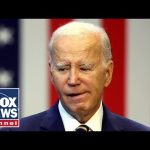Tomorrow, President Trump is set to meet with leaders from the European Union, and the anticipation is palpable. The hope is that this meeting will lead to a framework aimed at preventing any further escalatory tariffs that could shake both economies. The tension has been lingering over Atlantic trade relations, with President Trump expressing frustration that progress has not yet come to fruition. Many are eager for both sides to arrive prepared to iron out a plan that benefits everyone involved.
One hot topic that’s expected to be discussed is immigration. President Trump has made it clear that Europe must get a handle on its immigration issues or risk losing its identity. Over recent years, many Europeans have voiced their concerns regarding the levels of migration, particularly following major migration events from regions like Syria and Africa in 2015. The influx of newcomers has created challenges, especially in communities where integration can be tough. Language barriers, cultural differences, and historical divides have led to tensions, and President Trump seems to be advocating for a firmer approach to managing this migration.
However, the structure of the EU adds another layer to this discussion. It operates under the principle that once someone migrates to one EU country, they can freely move around within the entire union. This opens the door to benefits for businesses and citizens, but it also places significant responsibility on countries at the southern borders to bolster their external defenses. Countries like Greece, Italy, and Spain have become the de facto guardians of the EU’s borders, facing the brunt of the migration challenges. A more collective approach to border control could prove beneficial for the entire region.
It’s also hard to ignore the spectacle surrounding President Trump’s arrival in Europe. Upon landing in Scotland, there were reports of thousands gathering to catch a glimpse of him. His larger-than-life persona remains a draw, reminiscent of past American leaders who have also brought large crowds in their wake. President Obama and President Bush experienced similar enthusiasm during their European visits, highlighting the fascination many have for American leadership, no matter the political leaning.
In addition to trade and immigration, discussions at this meeting will also touch on NATO’s evolving role, particularly regarding defense spending and military support for Ukraine. Under President Trump’s leadership, NATO countries have made significant strides in increasing their defense budgets, moving from a previous 2% GDP target to an ambitious 5%. This shift marks a pivotal realignment in how NATO funds its operations, turning the focus towards strengthening defenses while ensuring that member nations help pay for military support rather than relying solely on U.S. taxpayers. This new dynamic also opens up avenues for NATO to assist Ukraine in more strategic ways, which could be crucial if tensions with Russia persist.
As the sun rises over the meeting tomorrow, the world will be watching closely. The hope is that President Trump and the EU leaders can find common ground on these pressing issues and pave the way for a more secure and cooperative future. Whether they can successfully navigate the complexities of trade, immigration, and defense remains to be seen, but one thing is clear—this meeting could have significant ramifications for both sides of the Atlantic.




